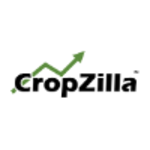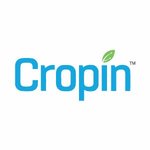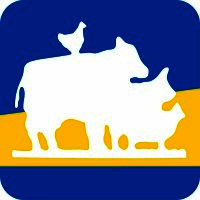What Is Agriculture Software?
Agriculture software, commonly known as farm management software, is a digital technology created expressly to help farmers and agribusinesses automate and improve their everyday operations. It uses a combination of computer programs, digital platforms, and mobile applications to handle crop and livestock management, financial tracking, inventory control, and team collaboration.
This software is changing the way farmers manage their fields by offering real-time data, analytics, and insights that allow them to make more educated decisions. It reduces the need for manual record-keeping while reducing the possibility of mistakes, saving time and money. Farmers may use agricultural software to remotely monitor their activities, minimizing the requirement for personal presence on the field.
Agriculture software is designed to meet farmers' specialized demands, such as crop management, precision farming, inventory monitoring, financial administration, and supply chain management. These software solutions are adaptable, so farmers may adjust them to their own operations and preferences. Some important qualities to consider when selecting agriculture software are ease of use, interoperability with multiple devices, cloud-based storage, data security, customer support, and interaction with other tools and devices like as sensors or drones.
Agriculture software helps farmers enhance production, save expenses, make better decisions, and increase profits by streamlining farm management operations. It also promotes sustainable agricultural methods by giving information on resource consumption and environmental effect. Overall, agriculture software is an excellent investment for farmers seeking to optimize their operations and remain competitive in today's digital age.
It has several benefits and has the potential to transform the agricultural business. As a buyer, thoroughly assess your requirements and select a credible software vendor who provides the features and support that best meet your farm's needs.
What Are the Recent Trends in Agriculture Software?
Agriculture software has evolved fast in recent years, driven by technological breakthroughs and an increasing need for more effective farm management.
Here are some of the most important trends to consider when analyzing agriculture software as a prospective investment for your farm:
1. Cloud-based Solutions: With the growth of cloud technology, agriculture software has switched to web-based systems that provide greater accessibility and real-time data tracking. This not only eliminates the need for costly on-site servers, but also enables users to view and control farm data from any location, at any time.
2. Precision Farming: Precision farming is gaining popularity in the agricultural business, and software has played an important part in its success. Agriculture software may collect data on crop health, soil moisture, and yield using GPS and other modern sensors, allowing farmers to make data-driven decisions to improve their operations and production.
3. connectivity with IoT: Agriculture software now incorporates the Internet of Things (IoT), allowing for smooth connectivity with agricultural equipment and devices. This allows farmers to collect real-time data from their crops and make educated decisions about irrigation, planting, and harvest.
4. Mobile apps: Mobile apps are growing popular in agriculture software, allowing farmers to oversee their activities while out in the field. These applications offer real-time updates and notifications, as well as the option to enter data on the move, allowing farmers to keep organized and on top of their numerous chores.
5. Predictive Analytics: Predictive analytics has shown to be a game changer in agricultural software. These software tools use big data and machine learning algorithms to examine many elements like as weather patterns and yield history in order to forecast future crop yields and aid with decision-making. Overall, current advancements in agriculture software aim to enhance efficiency, lower costs, and raise farmer production. Buyers must analyze their individual demands and evaluate these trends while selecting the best software for their farm.
Benefits of Using Agriculture Software
Agriculture software has become an indispensable tool for contemporary farms and agricultural businesses. As technology advanced, these software packages evolved to meet the agriculture industry's unique demands and difficulties.
Here are some of the primary advantages of adopting agricultural software on your farm or business.
1. Improved Efficiency and production: One of the key benefits of adopting farm software is a large increase in efficiency and production. These software tools help farmers to streamline procedures, automate chores, and access real-time data, allowing them to make better operational decisions. This leads to improved yields, lower labor costs, and increased profitability.
2. Accurate Data Management: Agriculture software has capabilities that help farmers gather, store, and analyze their data efficiently. Farmers who handle their data accurately may make educated judgments regarding crop management, fertilization, irrigation, and pest control. This results in higher yields and allows farmers to keep ahead of possible challenges.
3. Improved Crop Management: Agriculture software includes capabilities including crop planning, monitoring, and analysis. These instruments enable farmers to monitor crop growth, climatic conditions, and soil quality, allowing them to alter their operations accordingly. This leads to better crop health and quality, which increases yields.
4. Financial Management: Agriculture software products include options to assist farmers measure their spending, revenue, and profits. This improves budgeting and cost analysis, allowing farmers to make more educated financial decisions about their business.
5. Accessibility and Communication: Cloud-based agriculture software allows farmers to view their data and manage their operations from anywhere, on any device. This facilitates improved communication and collaboration among farmers, crop consultants, and other team members, resulting in increased efficiency and output.
6. Compliance and Traceability: Many agriculture software products provide capabilities that assist farmers in adhering to industry laws and ensuring crop traceability. This is especially important for adhering to food safety requirements and establishing customer confidence.
7. Customization and Integration: Every farm and agricultural activity has specific demands and requirements. Agriculture software provides customization possibilities for tailoring the program to individual demands. Furthermore, these software applications are compatible with other tools and devices, making data administration and analysis more efficient.
Important Factors to Consider While Purchasing Agriculture Software?
When it comes to acquiring farm software, buyers need examine many key elements in order to make an informed purchase. In this buyer's guide, we'll go over the essential factors that will help you pick the best software for your agricultural business.
1. Identify your individual demands: The first and most important step in selecting agricultural software is to precisely define your specific needs and expectations. Consider the sort of farming you conduct, the size of your business, and the duties you'd like the program to assist with. This will allow you to narrow down your choices and select software that is suited to your exact requirements.
2. Ease of use and user-friendliness: Another important point to evaluate is the software's usability and friendliness. It should have a basic and user-friendly interface. This saves you time and hassle while also ensuring that you and your workers can rapidly learn and utilize the program efficiently.
3. Compatibility and integration: Ensure that the software you pick is compatible with your current hardware and other software packages. This will guarantee a seamless incorporation and avoid any compatibility difficulties. In addition, seek for software that integrates with major farm management systems or industry-specific tools.
4. Consider the software's features and functioning: It should have all of the tools and features you need to properly run your farm, including crop planning, inventory management, financial management, and record-keeping. To improve decision-making, consider sophisticated features such as weather forecasting, remote monitoring, and data analytics.
5. Mobile compatibility: In today's digital age, it's critical to have access to your agricultural data on the move. Look for software that is mobile-compatible, so you can access and manage your farm from anywhere, at any time.
6. Customer support and training: Before making a purchase, examine how much customer support and training the software firm provides. A reputable vendor should offer extensive training and continuing support to help you get the most out of the product.
7. Security and data privacy: Because agriculture software saves sensitive farm data, it is critical that it has strong security mechanisms in place to safeguard your information from cyber attacks. Additionally, review the software's data privacy rules to guarantee that your information is kept secure. When choosing agriculture software for your farm, consider these considerations to make an informed selection. Remember to read reviews, compare pricing, and request demonstrations or free trials before making a final selection.
What Are the Key Features to Look for in Agriculture Software?
When it comes to selecting the best Agriculture Software, a few key qualities are critical to efficiency, production, and overall performance.
Here are the key things to look for in agriculture software:
1. Farm Management: A thorough farm management system is essential for efficient organization and planning. Look for tools that can help you track crops, manage inventories, plan tasks, and measure progress in real time.
2. Data Management: The capacity to gather, retain, and evaluate data is critical for making sound agricultural decisions. Look for software with strong data management features, which will allow you to collect data from numerous sources and produce reports for data-driven decision making.
3. Field Mapping: Detailed field maps allow you to readily view your farm and make strategic decisions. To ensure accurate field mapping, look for software that has customized mapping choices, satellite imaging, and GPS capabilities.
4. Crop Monitoring: Monitoring crop health and growth is critical for increasing yields. Look for software that provides remote crop monitoring, including information on soil moisture, meteorological conditions, and insect infestations.
5. price Tools: To remain competitive in the market, it is critical to have the appropriate price strategy. Look for software that includes pricing capabilities like cost analysis, market trends, and price forecasting to help you make more educated pricing decisions.
6. Mobile Compatibility: In today's fast-paced environment, accessing information on the go is critical. Look for software that includes a mobile app or is compatible with mobile devices, so you can access data and handle tasks from anywhere.
7. Integration: The agriculture business encompasses a wide range of technology and equipment. Look for software that can integrate with other agricultural equipment and machines, allowing you to streamline procedures and increase productivity.
8. Customer assistance: Before purchasing in software, be sure it comes with dependable customer assistance. Look for organizations who provide continuing technical support, training, and upgrades to guarantee that your software is constantly up to date and running well.
Why Do Businesses Need Agriculture Software?
Agriculture software is an essential tool for agricultural businesses.It aids in the simplification of operations, increased efficiency, and revenue maximization.In today's fast-paced and competitive business climate, having the right software may give a significant advantage.So, why do businesses need agricultural software?Let's go deeper and uncover the benefits of this technology.1. Streamlined operations: One of the key reasons businesses seek agriculture software is to streamline operations.This application automates inventory management, crop planning, and labor monitoring, hence removing the need for manual labor.It also provides real-time data, allowing firms to make better informed decisions and respond quickly to any issues that arise.This simpler technique results in increased output, fewer errors, and, ultimately, financial savings for the organization.
2. Increased efficiency: Agriculture software boosts productivity by eliminating the need for paper records and manual data entry.Previously, farmers and agricultural enterprises were required to keep detailed paper records, which was not only time-consuming but also prone to human error.With software, all data is stored in a centralized location that is constantly accessible and easily updated or analyzed.This improves accuracy, data management, and overall efficiency
3. Precision farming: Precision farming is a modern farming technique that employs technology to enhance agricultural operations.Agriculture software is essential to this strategy since it enables precision planting, soil mapping, and crop development tracking.With these skills, businesses can accurately predict each field's production potential, determine the best planting density, and apply the right amount of inputs.This leads to increased agricultural yields, better resource management, and, ultimately, higher income
4. Data Analysis and Reporting: Agriculture software includes significant data analysis and reporting capabilities.It collects data from many sources, such as sensors, drones, and equipment, and presents it in a comprehensible format.Businesses may utilize this data to conduct thorough studies and make informed decisions.They can also produce and send reports to stakeholders to provide transparency into their operations.This capability is extremely important for businesses seeking to improve their sustainability or comply with regulatory regulations.
5. Risk Management: The agriculture industry is exposed to a variety of threats, including weather, pests, and infections.Agriculture software has risk management tools that can help firms mitigate these risks.For example, real-time weather forecasting may help farmers prepare for extreme weather events, whereas crop scouting systems can detect potential problems and take immediate action.Businesses may protect their crops, prevent losses, and generate consistent revenue by limiting the impact of risks.
How Much Time Is Required to Implement Agriculture Software?
The time it takes to integrate agriculture software varies based on the business's individual needs and requirements. However, on average, the implementation phase might last from a few weeks to a few months. The first stage is reviewing current procedures and identifying areas that require improvement. This can take many weeks since it involves feedback from multiple stakeholders inside the company.
Once the review step is completed, the software vendor will collaborate with the organization to tailor the program to their exact requirements. This may include software installation, data transfer, and personnel training on how to utilize the new system. This procedure might take many weeks or months, depending on the complexity of the program and the size of the firm.
It is also critical to schedule time for testing and troubleshooting before the system goes live. This helps to guarantee that the program works properly and that any flaws are rectified before installation. The length of this phase will be determined by the amount of tests performed and the software's general stability. Overall, it is critical to recognize that the time necessary to install agricultural software might vary.
Businesses may guarantee a smooth and effective deployment process by collaborating closely with the software vendor and devoting adequate time for each stage.
What Is the Level of Customization Available in Agriculture Software?
Agriculture software provides a wide range of customization possibilities for farmers and agribusinesses. From crop management to financial tracking, these software packages may be adjusted to the customers' individual requirements and goals. The amount of customisation accessible in agricultural software varies according to the application and its capabilities.
Some software provides minimal customisation, allowing users to enter their own data and preferences. Others provide more complex customization features, such as the ability to generate custom reports, track particular field data, and interact with other software systems. The extent of customisation might also vary according to the type of farm software.
Farm management software, for example, may allow for customization of farm planning, budgeting, and production tracking, whereas precision farming software may for customization of variable rate sowing and nutrient management. When deciding on the extent of customisation in farm software, purchasers should first evaluate their individual demands and which features are most essential to them.
This will assist them in picking the correct program with the necessary amount of customisation. Buyers should also examine the simplicity of use and customization choices for the program. Some applications may demand a higher level of technical knowledge to customize, but others may provide user-friendly alternatives and customer support.
Which Industries can benefit the most from Agriculture Software?
Agriculture software has transformed how farming and related sectors function, making jobs more efficient and data-driven. Agriculture software, with functions such as crop yield monitoring, weather tracking, animal management, and supply chain optimization, is a beneficial solution for a wide range of sectors.
So, which sectors will profit the most from agricultural software? Let us find out.
1. Crop Production Industry: Crop production is the most evident benefit of agricultural software. From tiny family farms to major commercial enterprises, software has helped enhance production, save costs, and improve crop health. Farmers can make educated planting, fertilizing, and harvesting decisions because to capabilities such as real-time monitoring, soil analysis, and predictive analytics, which ultimately increase production and profitability.
2. Livestock Farming Industry: Livestock management is a complicated process, but with the aid of agricultural software, it has become more organized and efficient. This program offers a full solution for livestock farmers, including tracking animal health and nutrition as well as controlling breeding and reproduction. It also includes features like automated feeding systems and inventory management, which save farmers time and money.
3. Agricultural Supply Chain business: Supply chain management is critical to the proper operation of the agriculture business. Agriculture software enables farmers, suppliers, and distributors to communicate and exchange real-time data, assuring timely and effective delivery of commodities. This not only reduces waste and spoilage, but also removes the possibility of supply shortages.
4. Research and Development Industry: Agriculture software has proven to be an invaluable resource for researchers and scientists. Farmers may engage with researchers and exchange ideas to develop new and creative farming approaches when large volumes of data are made available. As a result, the agriculture industry advances and adopts more sustainable techniques.
5. Agri-Tech firms: The growth of agri-tech firms has been spurred by the development of agricultural software. These firms employ software to provide new answers to agriculture's most urgent concerns. From precision farming to pest control, these firms are using technology to drive good change in the sector.
Conclusion
Finally, investing in agricultural software may considerably improve your farming operations. It not only streamlines operations and increases efficiency, but it also delivers useful data and insights that may help you make better decisions and boost your overall productivity. With so many alternatives available on the market, it is critical to thoroughly examine your requirements and select software that best corresponds with company goals and budget.
Before making a purchase, evaluate elements such as usability, customer service, and integration capabilities. Remember that no program is perfect, but by choosing the best one for your needs, you may improve your agricultural practices and drive success in the ever-changing agriculture sector. We hope our buyer's guide has given you with useful information and enabled you to make an informed decision about your farm software requirements. Happy farming!






















